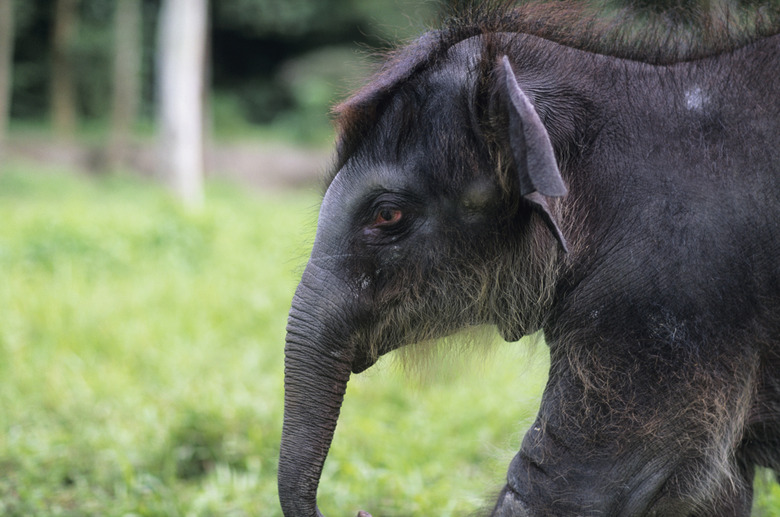Ecosystems Of Bangladesh
Bangladesh lies at the head of the Bay of Bengal. Historically part of the area of India called Bengal, the country gained its independence in 1972. With an area of 144,000 square kilometers — 55,599 square miles — and a population of 151.6 million people in 2012, it is one of the most densely populated countries of the world. Primarily a flat alluvial plain, Bangladesh contains four main types of ecosystems.
Coastal and Marine Ecosystems
Coastal and Marine Ecosystems
The western coast of Bangladesh contains part of the world's largest area of mangrove swamps, the Sundarbans, that continue westward into India. High in biodiversity, they play an important role in maintaining the life cycles of economically important resources such as shrimp, crabs and fish. The central coast contains the estuaries of the combined drainages of the Ganges-Padma, Maghna and Brahmaputra Rivers. The southeastern-most coastline contains muddy flats and sandy beaches. The offshore marine ecosystem contains fisheries with 169 species of brackish-water and marine fishes, about 65 percent of which are edible.
Inland Freshwater Ecosystems
Inland Freshwater Ecosystems
Two major rivers, the Ganges — called the Ganges-Padma in Bangladesh — and the Jamuna or Brahmaputra, unite in the center of the country and continue through the Ganges Lower River Basin to the Bay of Bengal, forming an extensive delta system. Prone to seasonal flooding, much of the land in the delta is submerged for five to seven months annually. Wetlands include shallow lakes in floodplain depressions called beels, oxbow lakes (bends in rivers or streams that become cut off, forming bow- or "C"-shaped lakes) called baors and deeply flooded depressions in the northwest called haors. Freshwater wetlands contain 41 globally threatened animal species.
Terrestrial Forest Ecosystems
Terrestrial Forest Ecosystems
Tropical evergreen and semi-evergreen forests grow in hilly eastern Bangladesh. With a rich flora of more than 2,000 flowering plants, it is home to 34 globally threatened animal species. Moist deciduous or salt forests, named after the dominant tree species, are located in central and northern Bangladesh and occupy 0.81 percent of the landmass. Degraded and fragmented, the forests have land ridges containing forest remnants and depressions holding rice paddies. Fresh water swamp forests contain flood-tolerant evergreen trees adapted to monsoon flooding.
Man-made Ecosystems
Man-made Ecosystems
Agro-ecosystems take up 54 percent of the land of Bangladesh and form the largest of the country's ecosystems. With its high population level, Bangladesh holds the highest percentage of cultivated land in South Asia. Diversity occurs in agricultural plants as well, with 6,000 rice varieties grown historically and currently, growing in all seasons. Jute grows in the monsoon or Kharif season and the winter or Rabi season sees cultivation of vegetables, wheat, oilseeds such as:
- beans
- lentils
Since Bangladesh's population increases by about 2 million people a year and rice is the main staple, rice cultivation has increased. Farmers in Bangladesh also raise cotton, sugarcane, livestock, fish, shrimp, flowers and silkworms.
References
- United Nations: Map of Bangladesh
- Bangla2000: History
- American Association for the Advancement of Science: Case Study: Bangladesh: Water Resources and Population Pressures in the Ganges River Basin
- Trading Economics: Bangladesh Population
- Convention of Biological Diversity: Bangladesh – Overview
- UNPAN: A Situation Analysis of Ecosystem Services and Poverty Linkages in Bangladesh
- Government of the People's Republic of Bangladesh: Ministry of Environment and Forests: Fourth National Report to the Convention on Biological Diversity
- Convention of Biological Diversity: Country Profiles: Bangladesh – Country Profile
- National Web Portal of Bangladesh: Agriculture
Cite This Article
MLA
Csanyi, Carolyn. "Ecosystems Of Bangladesh" sciencing.com, https://www.sciencing.com/ecosystems-bangladesh-9551/. 24 April 2017.
APA
Csanyi, Carolyn. (2017, April 24). Ecosystems Of Bangladesh. sciencing.com. Retrieved from https://www.sciencing.com/ecosystems-bangladesh-9551/
Chicago
Csanyi, Carolyn. Ecosystems Of Bangladesh last modified August 30, 2022. https://www.sciencing.com/ecosystems-bangladesh-9551/
